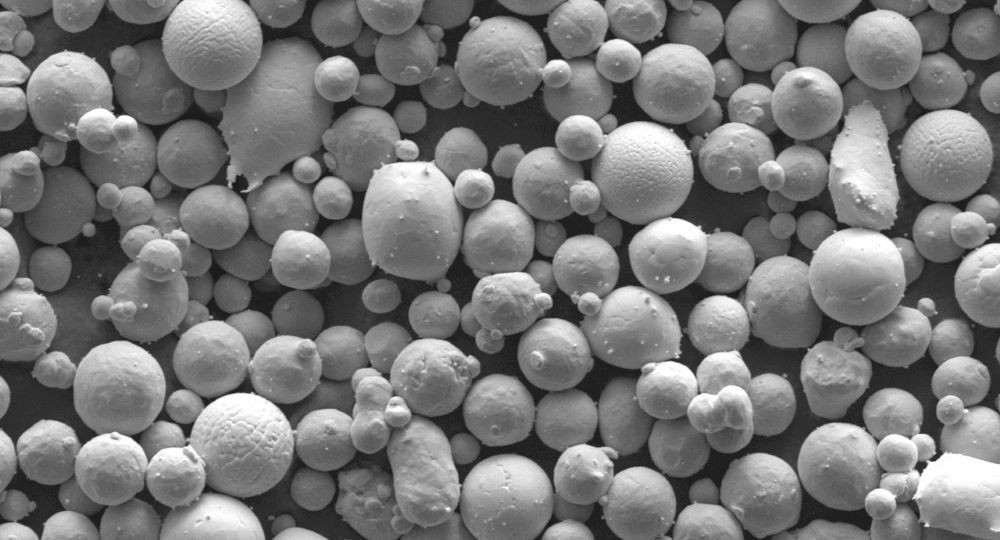Technologies
Discover, Connect & Collaborate at TECHINNOVATION 2021
High Efficiency Metal 3D Printing for Mixed Powder

Technology Overview
Metal 3D printing technology such as the Laser Powder Bed Fusion (LPBF) allows the manufacturing of dense near-net shape parts straight from a computer-aided design file. The limited choice of material, however, is the Achilles heel of this wonderful piece of technology. In view of the extensive time and cost required for the manufacturing of new pre-alloyed feed stock in the form of spherical powder, the community started to adopt the mix-and-blend approach to create new powder composition. The powder mix will then be alloyed during the laser 3D printing process, hence the term in-situ alloying.
The caveat of in-situ alloying in LPBF is with the difficulty to simultaneously address the issue of porosity and inhomogeneity. With our scanning approach to achieve unique melt pool formation, this conundrum can be resolved while at the same time improving the time and energy efficiency of the process. Our invention offers great flexibility for players across different industries and complements original equipment manufacturers in the conquest of producing parts requiring compositional flexibility, e.g. rapid compositional prototyping and functionally graded materials.
Technology Features, Specifications and Advantages
In a typical LPBF process, a component is built through multiple passes of laser to selectively fuse an area of the metal powder bed. To vertically build up a part, the process will be repeated layer-upon-layer. For each laser pass, single track melt pool that travels in the direction of laser scan is normally assumed, which limits the extent and flexibility of melt pool manipulation. In our invention however, we took advantage of accumulated heat during the laser scanning process to achieve multiple single track interactions, creating a uniquely large melt pool with low aspect ratio that travels perpendicular to the laser scan direction. We name this the Laser Induced Melt pool Enhancement (LIME) strategy. This creates unique features that benefits parts creation in various ways :
- Negligible porosity level – Low aspect ratio melt pool mitigates keyhole induced porosity
- Homogenous part – Large and slow-moving melt pool promotes homogenization
- Fast build rate – Unique melt pool movement prevents Rayleigh instability due to high-power high-speed scanning parameter
- Energy efficiency – Exploitation of accumulated heat to build a part
The technology has been demonstrated during the in-situ alloying of Ti34Nb (wt. %) via LPBF with 950 W laser power input, which shows only 0.002% of unmelted Nb particles and negligible porosity level. The method also enables parts with highly columnar grains to be built. All in all, the technology is generally applicable to most powder mix and pre-alloyed powder material.
Potential Applications
- Rapid compositional prototyping – Not every traditional alloy composition is suitable to be manufactured via the LPBF process. With in-situ alloying, new composition can be rapidly tested and verified for its printability. Coupled with our LIME strategy, a highly efficient route can be provided to produce quality prototypes for rapid alloy composition development.
- Compositional graded components – Most components perform better when they are functionally graded, which can be realized through compositional grading. The realization of which requires a robust and reliable means to achieve in-situ alloying and is made possible through the LIME strategy.
- Manufacturing of parts requiring columnar crystals – The LIME strategy, when properly tuned, can create a unique melt pool that promotes highly columnar crystal growth. The feature is highly appreciated for parts which experience directional loading or require anisotropic properties.
Customer Benefit
- High quality components – Original equipment makers (OEMs) or service bureaus can offer in-situ alloyed components with optimized density-homogeneity combination.
- Greater flexibility in parameter control – Usage of different parameter sets could influence a variety of outcomes, in terms of component’s quality, structural characteristics and cost to build a component. The LIME strategy enables the usage of laser parameters combination outside the typical process parameter window and offers greater processing flexibility.
- Faster build rate – The unique melt pool movement in LIME prevents the occurrence of undesirable Rayleigh instability due to high-power high-speed scanning parameter. Hence, the build rate per laser unit can be improved, resulting in cost savings.
- Lesser energy consumption – The better energy efficiency of LIME strategy ultimately offers environmental benefits associated with energy production, in addition to cost savings.